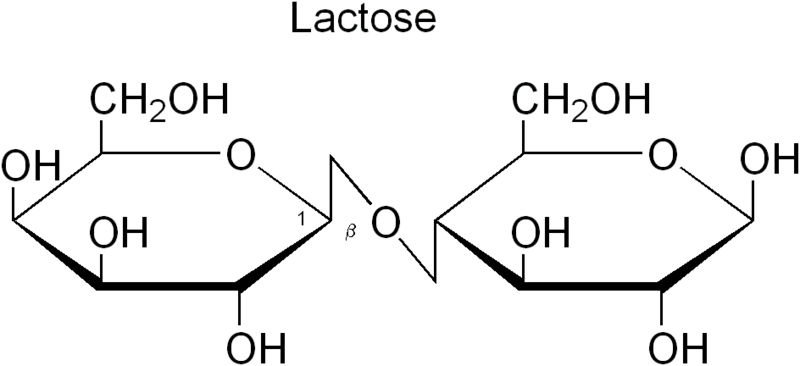-
 Snoring
Snoring
-
 Adjuvant
Adjuvant
-
 Etna
Etna
-
 Cathartic
Cathartic
-
 LOX
LOX
-
 Asphyxia
Asphyxia
-
 Phyllosilicates
Phyllosilicates
-
 Crest
Crest
-
 Infusion
Infusion
-
 Tsunamite
Tsunamite
-
 Certificate
Certificate
-
 Breast-feeding
Breast-feeding
-
 Fairing
Fairing
-
 Cryosurgery
Cryosurgery
-
 Protease inhibitor
Protease inhibitor
-
 Body temperature
Body temperature
-
 Apyrexial
Apyrexial
-
 Smart phone
Smart phone
-
 Antineoplastic
Antineoplastic
-
 Hydroelectricity
Hydroelectricity
-
 Melt flow index
Melt flow index
-
 ANSI
ANSI
-
 Layering
Layering
-
 To implement
To implement
-
 Pleiades
Pleiades
-
 Cenozoic
Cenozoic
-
 Cache poisoning
Cache poisoning
-
 Goddard Space Flight Center
Goddard Space Flight Center
-
 Fibrous root system
Fibrous root system
-
 Lychee
Lychee
Lactose
Lactose is a complex sugar found in large amounts in milk.
Structure of lactose
Lactose is a disaccharide, i.e. it is a complex sugar, made up of an association of two simple sugars, glucose and galactose, connected by a specific carbohydrate bond (hence its official name of β-D-galactopyrannosyl(1→4)D-glucopyrannose). Its elemental chemical formula is C12H22O11.
Function of lactose
Lactose is found in high concentrations in mammal milk and is an important nutritional energy source. It is converted into glucose and galactose in the infant gastrointestinal tract by the enzyme β-galactosidase (a lactase). These molecules are then absorbed separately.
Lactose intolerance
Although it is found in all mammal babies, this enzyme may be deficient in some adults causing lactose intolerance. In this case lactose is no longer broken down into simple sugars and cannot be absorbed but remains in the gastrointestinal tract. It is the metabolised by intestinal bacteria (producing hydrogen, methane and carbon dioxide) which causes intestinal discomfort and even diarrhoea.
 Lactose is a complex sugar. © Wobble, Wikimedia, public domain
Lactose is a complex sugar. © Wobble, Wikimedia, public domain
Latest
Fill out my online form.



